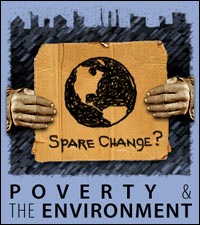
Consider this central paradox of U.S. environmentalism: In much of popular and political culture, the movement is dismissed as the pet cause of white, well-off Americans — people who can afford to buy organic arugula, vacation in Lake Tahoe, and worry about the fate of the Pacific pocket mouse. And yet, the population most affected by environmental problems is the poor.
This is a reality most of us recognize in the developing world, and it’s true that the confluence of economic and environmental injustice can be particularly extensive and devastating in poor nations. But it is also true — and far less remarked-upon — that poverty and environmental degradation go hand and hand in the United States as well. The lower your income in this country, the higher the likelihood that you will be exposed to toxics at home and on the job. The greater the risk that you will suffer from diseases — ranging from asthma to cancer — caused or exacerbated by environmental factors. The harder it will be for you to find and afford healthy food to put on your table. The less likely you are to live in a community that provides safe outdoor spaces for you and your family to enjoy. And, as recent history tragically exposed, the more vulnerable you are to environmental catastrophes, whether they are natural disasters like Hurricane Katrina or human-made tragedies like the Exxon Valdez.
In short, the worst consequences of environmental degradation are visited on the homes, workplaces, families, and bodies of the poor.
In the United States today — that is, at a time and in a nation touted for prosperity — 12.7 percent of the population lives below the poverty line. In this special seven-week series, Grist will focus on the environmental realities facing those 37 million people, as well as the many additional millions of Americans who struggle to make ends meet. Our coverage includes investigative reports, opinion pieces, interviews, and profiles. And we will debut a series of multimedia “virtual walking tours” of poverty-stricken regions around the country, led by the community members who are fighting to transform them.
It is our hope that this special series will help shed light on some frequently hidden environmental problems and expose the connections between economic and ecological survival. Ultimately, we hope to challenge and change the received wisdom about what counts as an environmental issue, what we mean when we refer to “the environment,” and where, how, and for whom environmentally minded movements, organizations, and people should dedicate their energies.
Click here to see a list (updated daily) of new articles and features added to this series.
Click here to join ongoing discussions about poverty and the environment, or start new discussion threads yourself.

